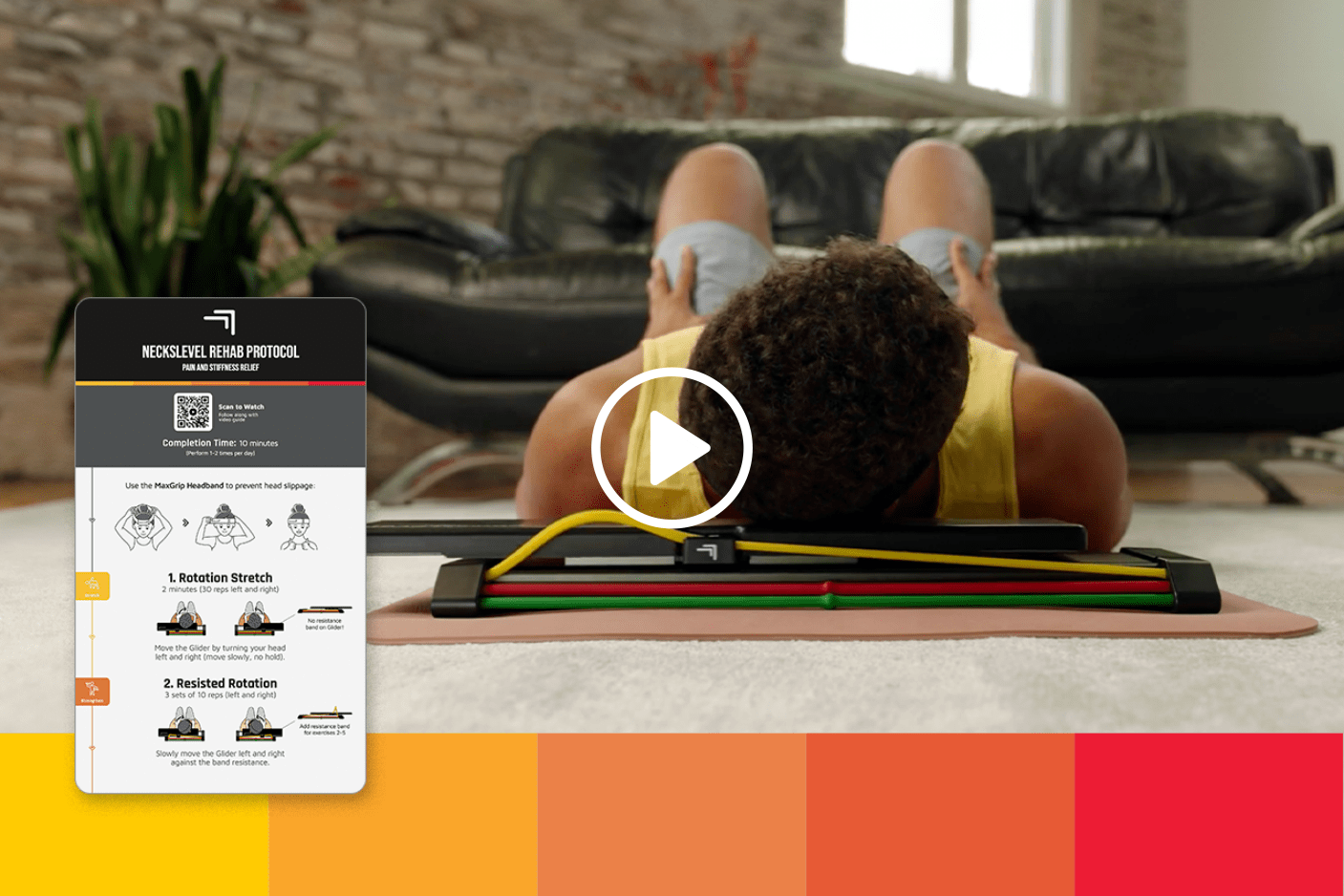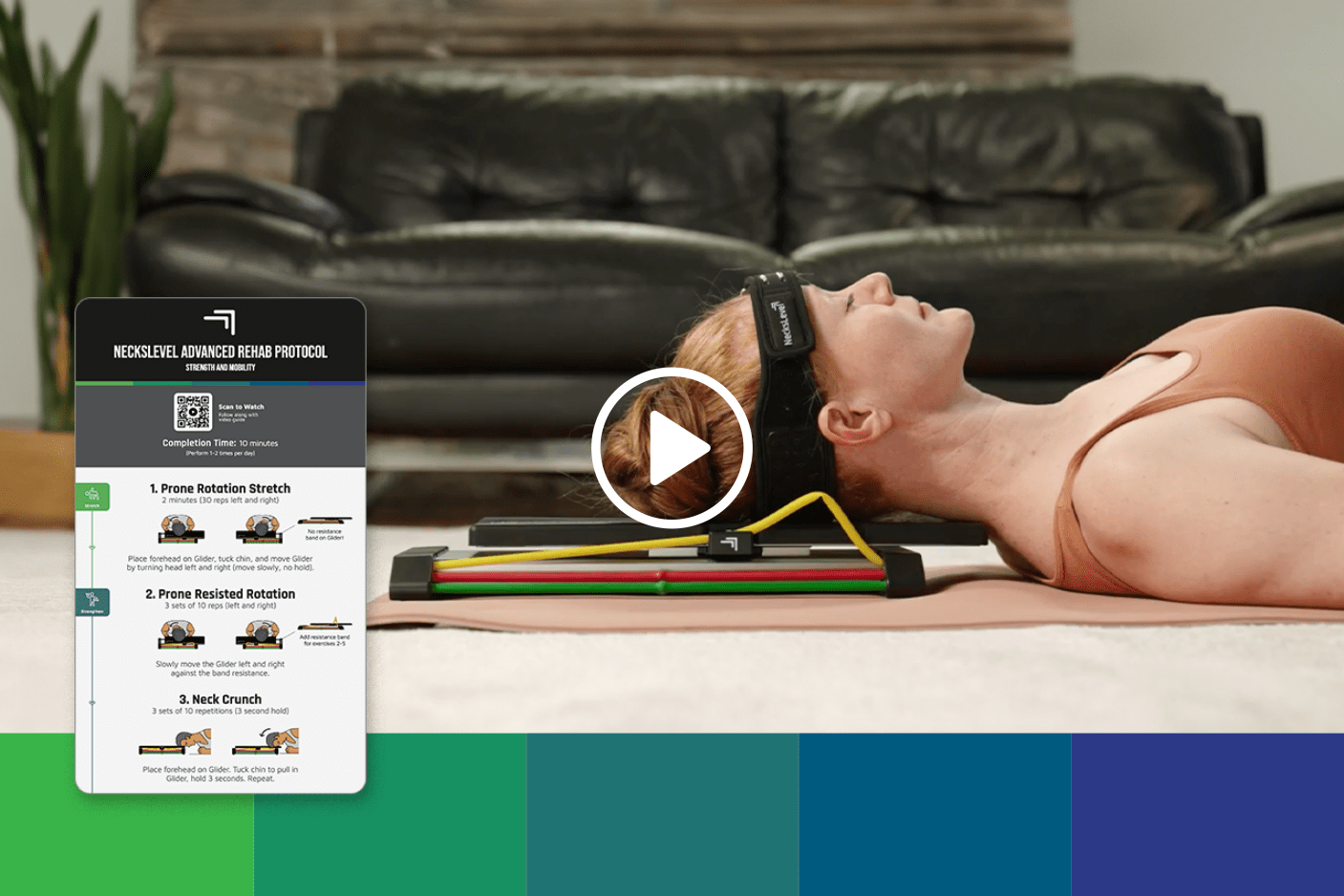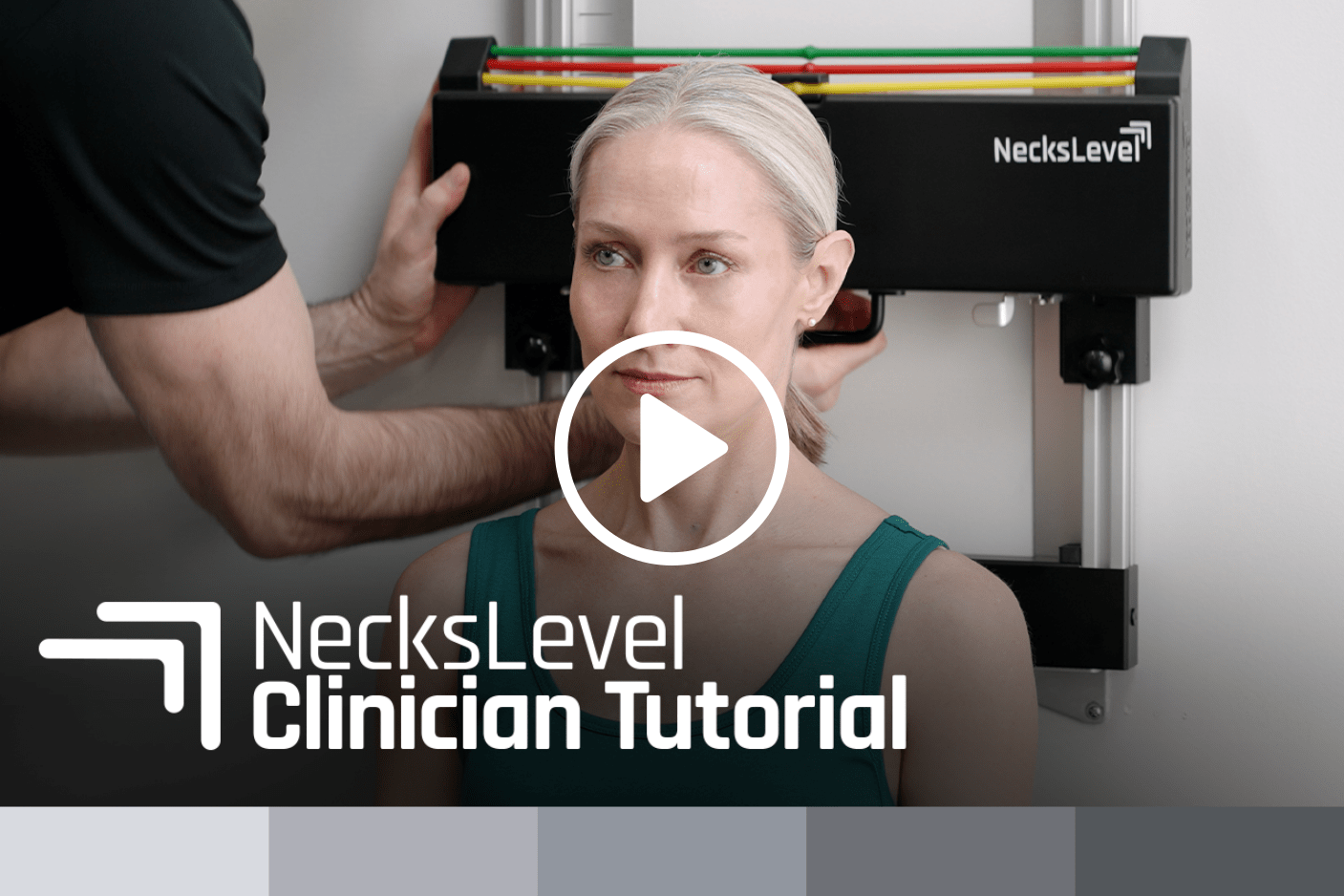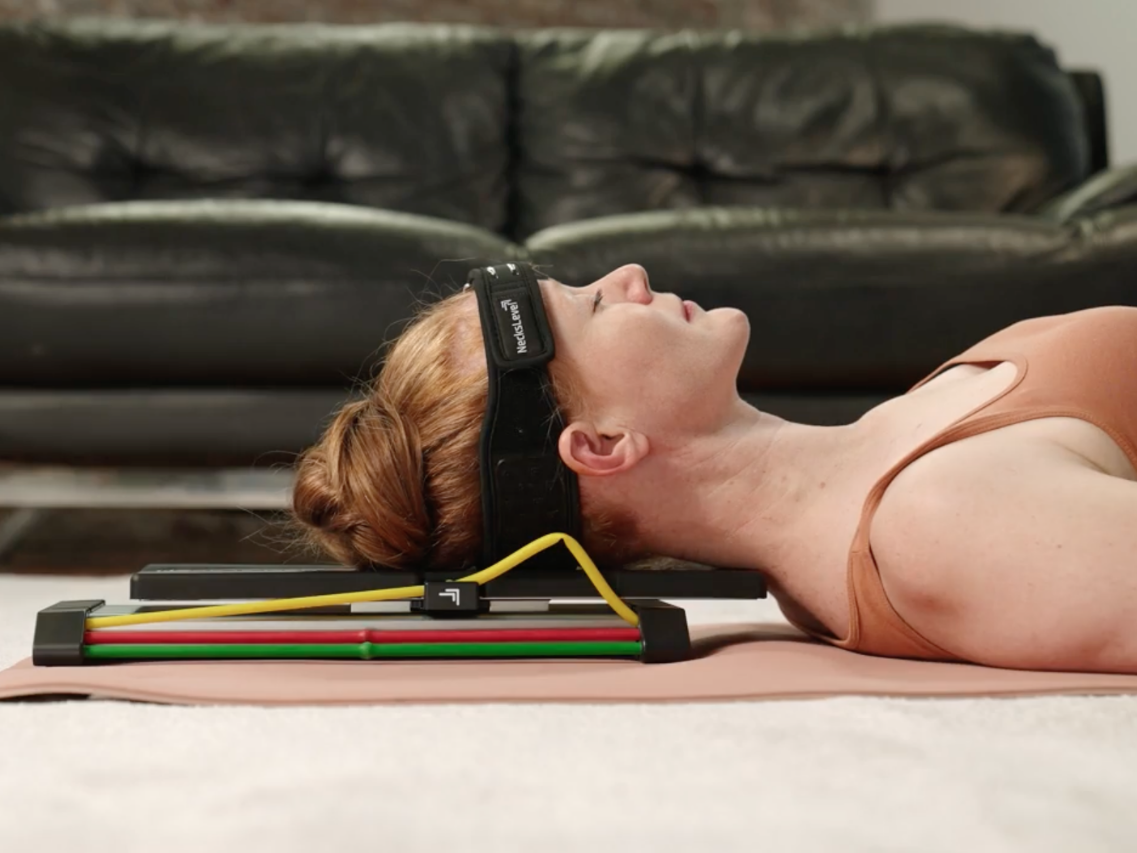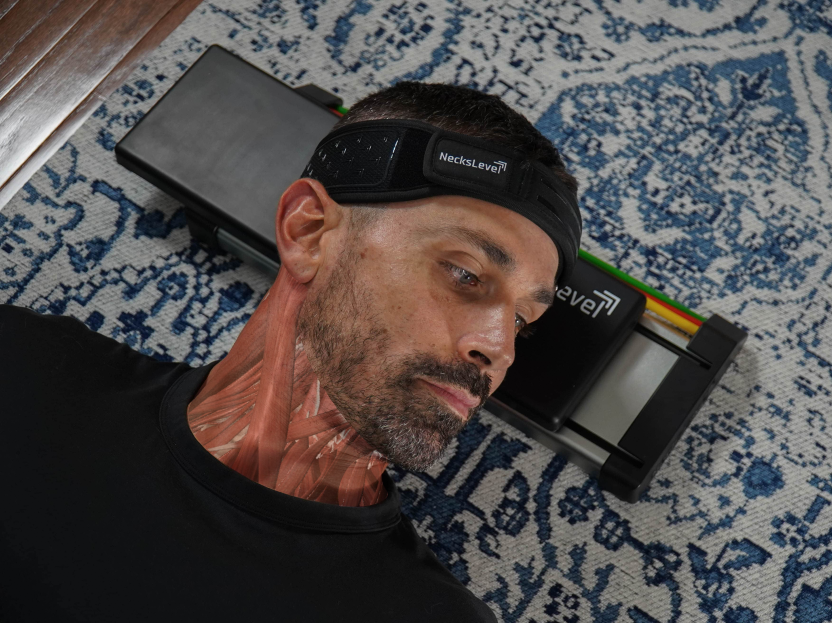Deep Neck Flexor Exercises | Cervical Flexor Strengthening from NecksLevel
Maintaining neck health is crucial for overall well-being, and one key component is strengthening the deep neck flexors. These muscles play a significant role in supporting the neck, improving posture, and reducing neck pain. In this post, we will explore effective exercises to target the deep neck flexors, including photos to guide you through each movement.
Why Strengthen your Deep Neck Flexors?
-
Improve neck stability and posture
-
Reduce neck pain and discomfort
Enhance overall neck function

The deep neck flexors are a group of muscles located at the front of your neck. They are essential for stabilizing the cervical spine, maintaining good posture, and allowing smooth and controlled neck movements. Weakness in these muscles can lead to poor posture, neck pain, and even headaches. The deep neck flexors include the longus colli, capitis, and rectus capitis anterior muscles which are found on the front of the spine behind your mouth and throat.
Top Exercises to Strengthen Deep Neck Flexors
1. Chin Tucks
Chin tucks are a simple yet effective exercise to activate and strengthen the deep neck flexors.

How to Perform:
1. Lie on your back with your head resting.
2. Gently nod your head as if saying "yes," feeling the muscles at the front of your neck engage.
3. Hold the contraction for 5-10 seconds, then relax.
Perform 3 sets of 10 reps
Tip: When you tuck your chin, try to relax all of the big neck rotator muscles and jaw muscles to help target the deep neck flexors.
2. Chin Tuck with Head Lift
Adding the head lift to the chin tuck exercise further challenges & strengthens the deep neck muscles.

How to Perform:
1. Lie on your back with your head resting.
2. Gently nod your head as if saying "yes," feeling the muscles at the front of your neck engage.
3. While holding the chin tuck, lift your head in the air about 2 inches. Hold for 10 seconds.
4. Perform 2-3 sets of 10 reps
Tip: When you lift your head, focus on keeping the chin tucked to avoid suboccipital headaches.
Are your Deep Neck Flexors weak?
There are several ways to help you know if your deep neck flexors are weak. People with weak deep neck flexors commonly report:
Difficulty maintaining good sitting and standing posture (due to poor muscle endurance)
History of trauma to the neck (whiplash injury, concussion, car accident, etc)
The head feeling heavy and difficult to hold up especially by the end of the day

Sitting in a slouched, forward head posture is common for people with deep neck flexor weakness. Strengthening these muscles will help improve their endurance and overall posture.
Deep Neck Flexor Endurance Test
Physical therapists use a simple head lift test to see if a patient's deep neck flexors are weak. To perform the test, grab a timer and:
1. Lie on your back with your knees bent and feet on the floor.
2. Begin holding a chin tuck while keeping your head resting on a flat surface.
3. While keeping the chin tuck, lift your head into the air just enough to be unsupported.
4. Time yourself to see how long you can maintain a full chin tuck and keep your head floating in the air.
Averages for Deep Neck Flexor Endurance Test:
Women: 29 seconds
Men: 39 seconds
This test will give you an idea of the endurance of your deep neck flexors, but visit your local physical therapist for a full evaluation.
Conclusion | Deep Neck Flexors
Physical therapists use a simple head lift test to see if a patient's deep neck flexors are weak. To perform the test, grab a timer and:
Consistency is Key: Perform these exercises daily to see significant improvements in neck strength and posture.
Start Slowly: Begin with shorter holds and fewer repetitions, gradually increasing as your muscles become stronger.
Focus on Form: Proper form is crucial to avoid strain and maximize the benefits of each exercise. Follow the pictures closely to ensure correct technique.
Work the Exercises into Daily Life: Incorporate deep neck flexor exercises into your daily activities. For example, perform chin tucks while driving or working at a desk.
Specialized Equipment may be needed: The right neck exercise equipment may make the difference between achieving your neck strengthening goals versus struggling to strengthen your neck.
Written by:

Dr. Scott Dickenson, DPT, ATC
Physical Therapist
Scott is an Orthopedic Physical Therapist specializing in neck pain with nearly a decade of clinical experience. He regularly speaks at national Physical Therapy, Athletic Training, & Chiropractic conferences on neck injuries & rehab in sport.
NecksLevel Glide
"Like having a Physical Therapist in your home"
Professional neck strengthening and stretching in one compact device. Relieve neck pain while reducing neck stiffness & improving your posture.
Shop Now

Related Resources:


